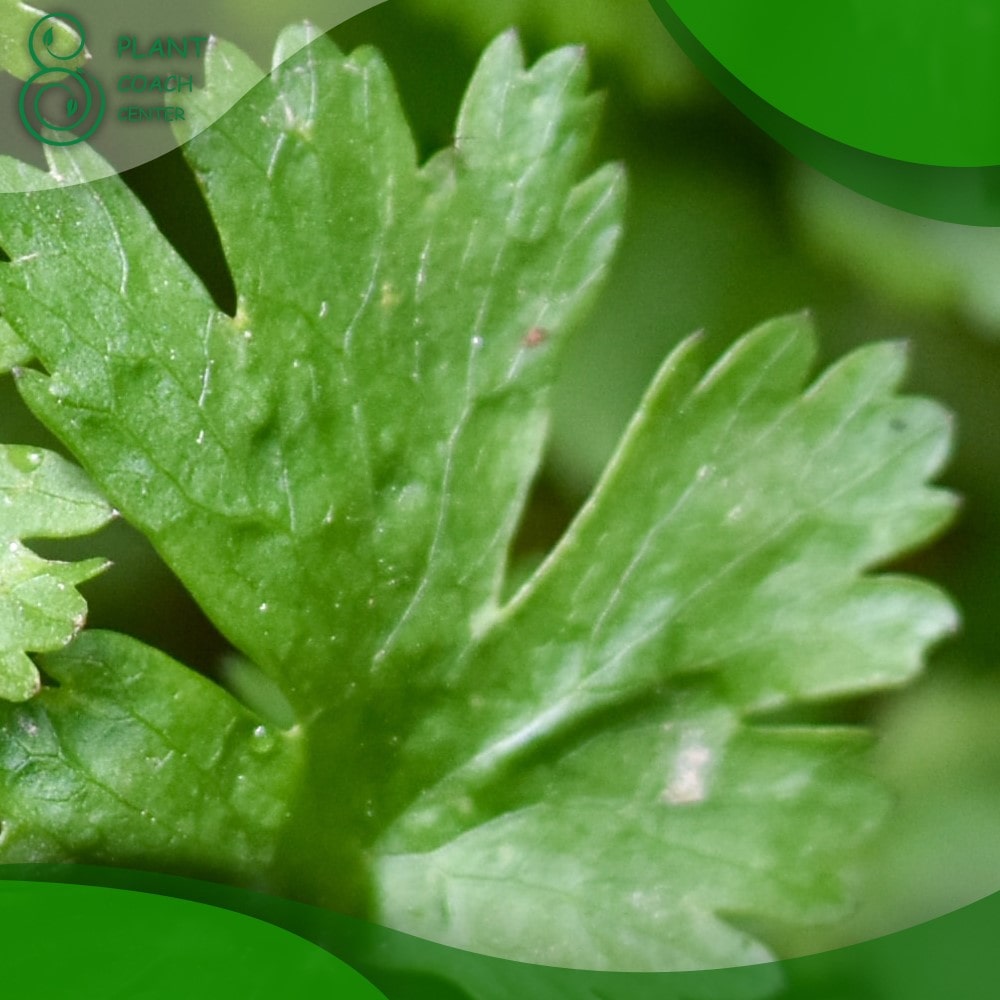When to Plant Coriander
Introduction
Coriander, also known as cilantro, is a versatile herb that adds a delightful flavor and aroma to various culinary dishes. Whether you’re an avid gardener or a beginner exploring the joys of growing your own herbs, understanding the optimal time to plant coriander is crucial for a successful harvest.
In this comprehensive guide, we will delve into the various factors that influence coriander planting, explore the ideal planting seasons, discuss the requirements of this herb, and provide valuable tips to ensure a bountiful coriander harvest.
At PlantCoachCenter.com, we are passionate about empowering plant enthusiasts with knowledge and guidance for successful gardening endeavors. Join us as we embark on a journey to uncover the best practices for planting coriander and overcoming common challenges along the way.
Understanding Coriander Planting Requirements
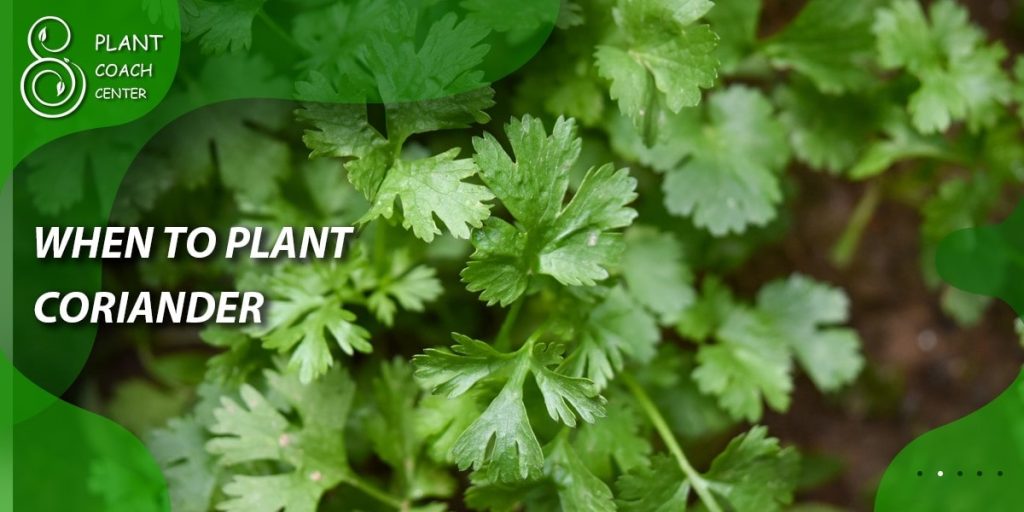
Coriander, like any plant, has specific requirements that must be met to thrive. By understanding these requirements, you can create an optimal environment for your coriander plants to flourish.
Climate and Temperature Considerations
– Coriander’s Preferred Climate: Coriander thrives in moderate climates with temperatures ranging from 50°F to 85°F (10°C to 30°C).
– Temperature Tolerance of Coriander: Coriander is relatively tolerant of cool temperatures but can bolt and go to seed prematurely in hot weather.
Soil Conditions for Coriander
– Soil Type and Texture: Coriander prefers well-draining soil with a loamy texture. Sandy or clay soils should be amended with organic matter to improve drainage.
– pH Level for Coriander: Maintain a slightly acidic to neutral pH level between 6.2 and 6.8 for optimal coriander growth.
– Soil Drainage Requirements: Good drainage is essential to prevent root rot and other soil-borne diseases.
Sunlight and Light Requirements
– Coriander’s Sunlight Needs: Coriander thrives in full sun to partial shade, requiring at least 4-6 hours of direct sunlight per day.
– Importance of Light for Coriander Growth: Sufficient light promotes vigorous foliage growth and enhances the flavor and aroma of coriander leaves.
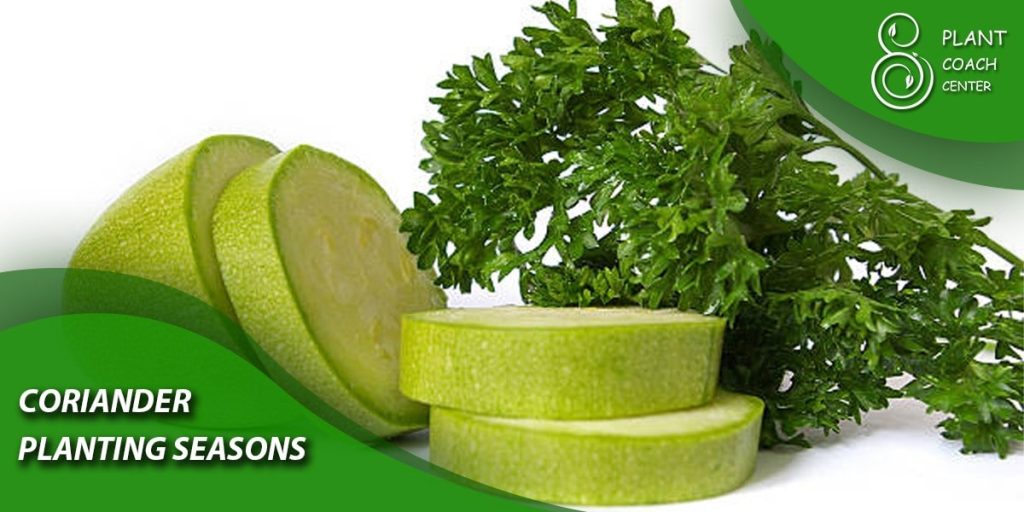
Coriander Planting Seasons
Choosing the right season to plant coriander is crucial for its successful growth. Let’s explore the advantages and considerations for each season.
Spring Planting
Spring is an excellent time to sow coriander seeds as the mild temperatures and longer days create favorable conditions for germination and growth.
– Advantages and Disadvantages:
– Advantages: Coriander planted in spring enjoys optimal growing conditions, including moderate temperatures and abundant sunlight.
– Disadvantages: Rapid temperature fluctuations and late-season heatwaves can induce bolting, causing premature seed formation.
– Ideal Conditions for Spring Planting:
– Choose a location with well-draining soil and ample sunlight.
– Wait until the soil temperature reaches around 50°F (10°C) for successful germination.
– Protect young seedlings from late frosts by covering them with a light fabric or cloche.
– Steps for Successful Spring Planting:
- Prepare the soil by removing weeds and incorporating compost or well-rotted manure.
- Sow coriander seeds directly into the prepared soil, spacing them according to the packet instructions.
- Water gently to keep the soil consistently moist but not waterlogged.
- Thin out seedlings to ensure proper spacing and promote healthy growth.
- Mulch around the plants to conserve moisture and suppress weed growth.
- Monitor for pests and diseases, taking appropriate measures if necessary.
- Harvest coriander leaves when they reach the desired size, before the plant begins to bolt.
Summer Planting
While coriander is a cool-season herb, with proper care and consideration, it can be successfully grown during the summer months as well.
– Pros and Cons of Summer Planting:
– Pros: Planting coriander in summer allows for a continuous harvest throughout the season.
– Cons: High temperatures and extended daylight hours can cause coriander to bolt quickly, reducing the leaf harvest period.
– Considerations for Hot Summer Regions:
– Choose heat-tolerant coriander varieties or opt for slow-bolting cultivars.
– Provide afternoon shade or use shade cloth to protect coriander from intense sunlight and heat stress.
– Implement shading techniques such as intercropping with taller plants or using temporary shade structures.
– Tips for Planting Coriander in Summer:
- Start coriander seeds indoors or in a cool, shaded area before transplanting them to the garden.
- Ensure the soil is well-prepared with organic matter and has good drainage.
- Water regularly and deeply to prevent the plants from drying out in the summer heat.
- Apply a layer of organic mulch to conserve soil moisture and regulate soil temperature.
- Harvest coriander leaves frequently to delay bolting and encourage continuous growth.
Fall Planting
Fall is an opportune time for planting coriander, especially in regions with mild autumns. The cooler temperatures and reduced daylight hours create favorable conditions for coriander growth.
– Benefits and Challenges of Fall Planting:
– Benefits: Cooler temperatures and lower chances of bolting allow for prolonged leaf harvest.
– Challenges: Coriander may take longer to establish due to shorter daylight hours and slower growth rates.
– Suitable Conditions for Fall Planting:
– Choose a location that receives ample sunlight during the fall season.
– Begin planting approximately 8-10 weeks before the first expected frost date in your region.
– Ensure the soil remains consistently moist but not waterlogged.
– Techniques to Optimize Fall Planting:
- Prepare the soil by removing any debris and incorporating organic matter.
- Sow coriander seeds directly into the soil, following the recommended spacing.
- Water the seeds gently and regularly to aid germination and establishment.
- Protect the young seedlings from early frosts by covering them with row covers or cloches.
- Monitor soil moisture levels and adjust watering as needed.
- Harvest coriander leaves before the onset of freezing temperatures, or consider using protective measures like cold frames to extend the harvest period.
By understanding the unique considerations for each season, you can make informed decisions when selecting the most suitable time to plant coriander. Experimenting with different planting seasons can also provide valuable insights into your specific growing conditions and help you fine-tune your gardening practices.
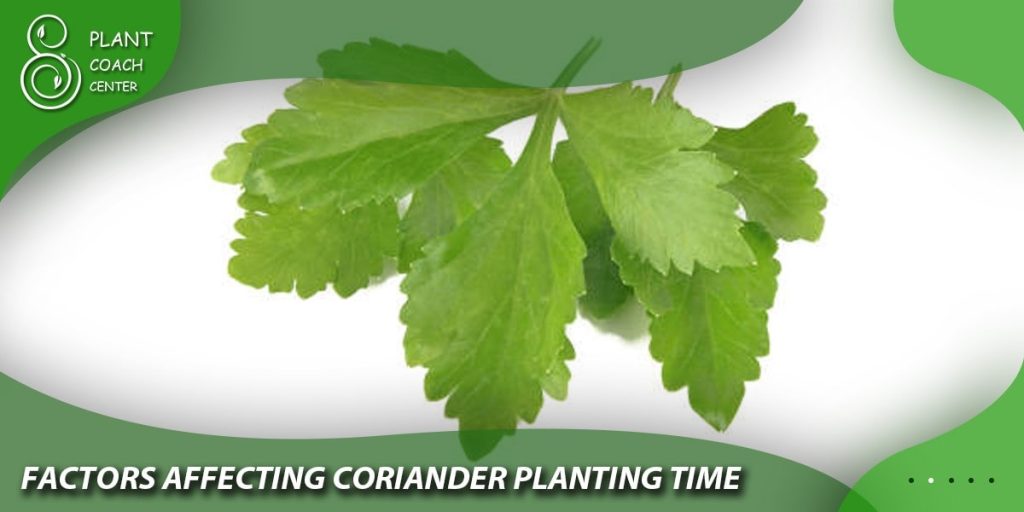
Factors Affecting Coriander Planting Time
Several factors influence the ideal planting time for coriander. Understanding these factors will help you determine the most favorable conditions for successful coriander growth.
Geographical Location and Climate Zones
Geographical location plays a vital role in determining the appropriate planting time for coriander. Consider the following factors related to your climate zone:
– Frost Risk and Coriander Planting:
– Determine the average last spring frost date and the first fall frost date in your region.
– Avoid planting coriander too early in spring when the risk of frost is still present.
– Plan fall plantings with sufficient time for coriander to mature before the first frost.
Microclimates and Coriander Planting Time
Microclimates within your garden or growing area can impact the planting time for coriander. Take note of microclimatic conditions such as:
– Sun Exposure and Heat Accumulation:
– Observe areas with different sun exposure and heat retention properties.
– Choose planting locations that offer the right balance of sunlight and shade for coriander.
Coriander Varietal Considerations
Different coriander varieties may have specific planting requirements. Consider the characteristics of the coriander variety you intend to plant, including:
– Days to Maturity: Check the seed packet or variety description to determine the time required for the coriander variety to mature.
– Bolting Tendency: Some coriander varieties are bred to be slow-bolting, which can extend the leaf harvest period.
Understanding the unique factors influencing coriander planting time in your specific region will enable you to make informed decisions and maximize the potential for a successful harvest.
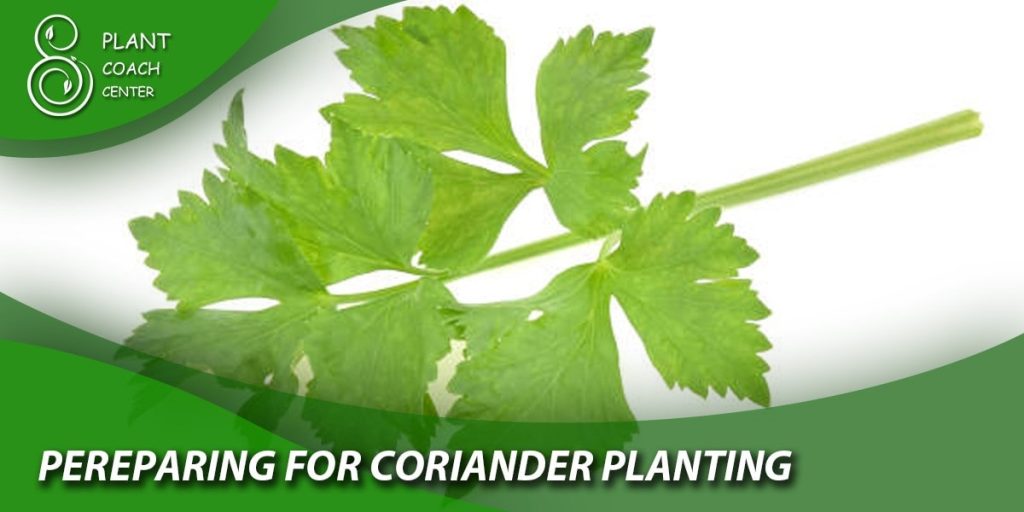
Preparing for Coriander Planting
Before planting coriander, there are essential steps and preparations to undertake. This ensures that your coriander seeds or seedlings have the best possible start.
Seed Selection and Quality
– Choose High-Quality Seeds: Select fresh coriander seeds from reputable suppliers or save seeds from healthy, non-hybrid coriander plants.
– Check Seed Viability: Conduct a seed viability test by placing a few seeds in a damp paper towel and observing germination rates.
– Consider Slow-Bolting Varieties: Opt for coriander varieties known for their slow-bolting characteristics for extended leaf harvest.
Seed Treatment and Pre-Soaking
– Pre-Soaking Seeds: Soak coriander seeds in water for about 24 hours before planting to enhance germination rates.
– Seed Scarification: Gently scratch or nick the seed coat with sandpaper to improve germination for hard-coated coriander seeds.
Seedling Production Techniques
Depending on your preferences and resources, you can start coriander from seeds indoors, in a greenhouse, or directly sow them in the garden.
Indoor Seed Starting:
– Fill seed trays or pots with a high-quality seed starting mix.
– Sow coriander seeds at the recommended depth, usually ¼ to ½ inch (0.6 to 1.3 cm).
– Provide adequate moisture and maintain a temperature around 70°F (21°C) for germination.
– Transplant seedlings outdoors when they have developed a few sets of true leaves.
Greenhouse Seedling Production:
– Utilize a controlled environment in a greenhouse for optimal germination and early growth.
– Follow similar steps as indoor seed starting, but adjust environmental conditions as needed.
Direct Seeding in the Garden:
– Wait for the appropriate planting time according to your region and soil temperature.
– Create furrows or shallow trenches in the prepared soil.
– Sow coriander seeds at the recommended spacing and depth.
– Water gently after sowing and monitor soil moisture regularly.
By following these preparation techniques, you can ensure that your coriander plants have a strong start and maximize their growth potential.
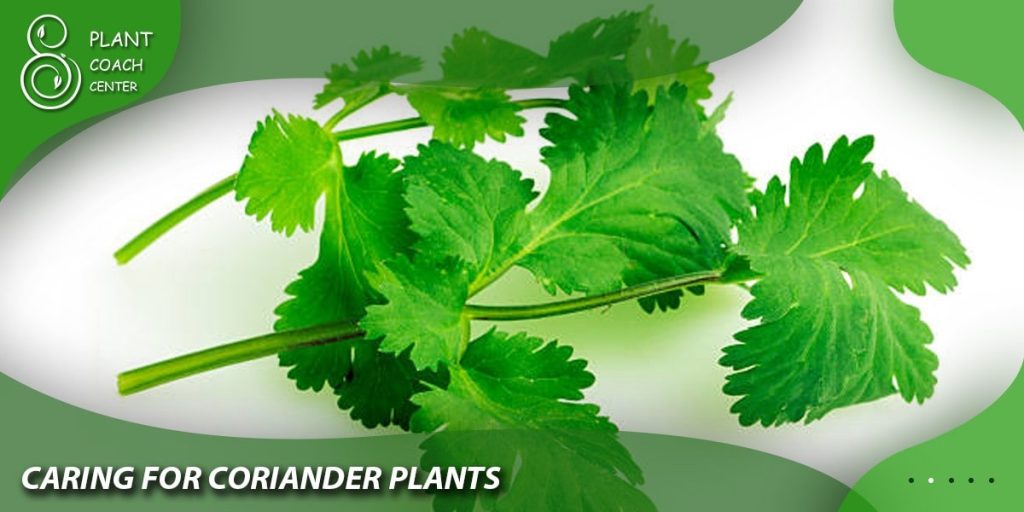
Caring for Coriander Plants
Once you have planted your coriander seeds or seedlings, proper care is essential to ensure healthy growth and a bountiful harvest. Let’s explore the key aspects of caring for coriander plants.
Watering Requirements
– Adequate Moisture: Coriander plants require consistent moisture, especially during germination and early growth stages.
– Avoid Overwatering: Ensure the soil is damp but not waterlogged, as excessive moisture can lead to root rot and other diseases.
– Monitor Soil Moisture: Regularly check the soil moisture levels and water when the top inch (2.5 cm) of soil feels dry.
Fertilization
– Organic Matter: Prioritize enriching the soil with organic matter, such as compost or well-rotted manure, before planting.
– Balanced Fertilizer: If necessary, apply a balanced fertilizer with a ratio of nitrogen (N), phosphorus (P), and potassium (K) to promote healthy vegetative growth.
Weed Control
– Weed Competition: Keep the area around your coriander plants free from weeds, as they can compete for nutrients and water.
– Mulching: Apply a layer of organic mulch around the coriander plants to suppress weed growth and conserve soil moisture.
Pest and Disease Management
– Common Pests: Look out for pests such as aphids, caterpillars, and leaf miners. Use organic pest control methods like handpicking or insecticidal soaps if necessary.
– Disease Prevention: Proper spacing, good air circulation, and well-drained soil help prevent diseases like damping-off, root rot, and powdery mildew.
Harvesting Coriander Leaves
– Leaf Harvesting Timing: Harvest coriander leaves when they reach a desirable size, usually before the plant starts to bolt and produce seeds.
– Selective Harvesting: Pick individual leaves or cut entire stems as needed, avoiding excessive removal that may hinder plant growth.
– Continuous Harvest: Regularly harvest leaves to encourage new growth and prolong the harvest period.
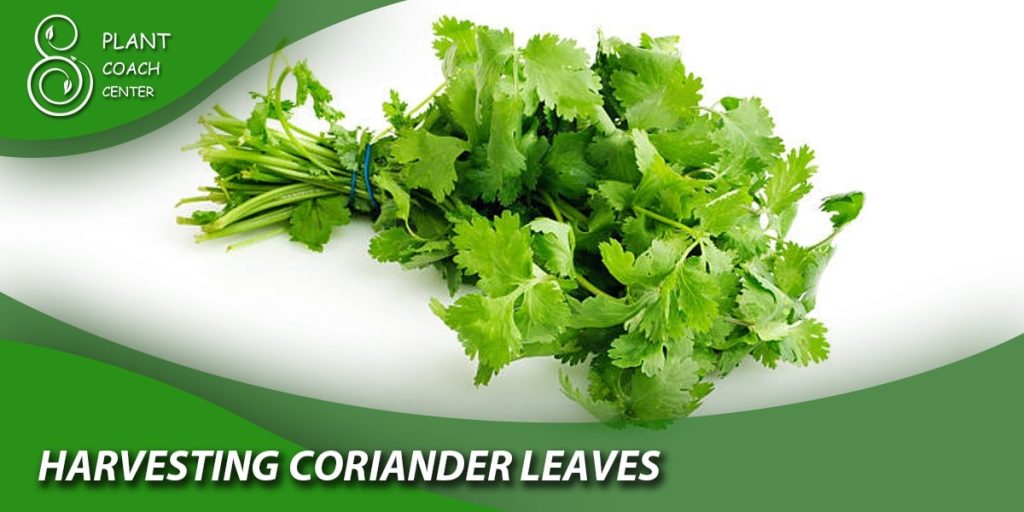
Conclusion
Planting coriander can be a rewarding experience for herb enthusiasts and gardeners alike. By understanding the factors influencing coriander planting time, preparing the soil, and providing proper care, you can enjoy a continuous supply of fresh coriander leaves for culinary delights.
At PlantCoachCenter.com, we strive to equip you with valuable knowledge and resources to enhance your gardening journey. By implementing the tips and techniques outlined in this article, you can confidently embark on your coriander planting adventure. Remember to adapt your practices based on your specific geographical location and microclimatic conditions.
So, roll up your sleeves, gather your seeds, and get ready to embark on a flavorful journey with coriander. Happy planting and harvesting!
When should I plant coriander?
Spring or early summer.
Can I plant coriander in the winter?
No, coriander prefers warmer temperatures.
Is it better to plant coriander indoors or outdoors?
Both options work, but outdoor planting is more common.
How long does coriander take to grow?
Around 3 to 4 weeks from planting to harvest.


